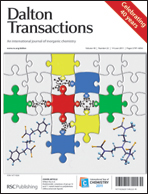A novel precursor system and its application to produce tin doped indium oxide
Abstract
A new type of precursor has been developed by molecular design and synthesised to produce tin doped indium oxide (ITO). The precursor consists of a newly developed bimetallic indium tin alkoxide, Me2In(OtBu)3Sn (Me = CH3, OtBu = OC(CH3)3), which is in equilibrium with an excess of Me2In(OtBu). This quasi single-source precursor is applied in a sol–gel process to produce powders and coatings of ITO using a one-step heat treatment process under an inert atmosphere. The main advantage of this system is the simple heat treatment that leads to the disproportionation of the bivalent Sn(II) precursor into Sn(IV) and metallic tin, resulting in an overall reduced state of the metal in the final tin doped indium oxide (ITO) material, hence avoiding the usually necessary


 Please wait while we load your content...
Please wait while we load your content...